when inner conifer needles turn yellow or brown
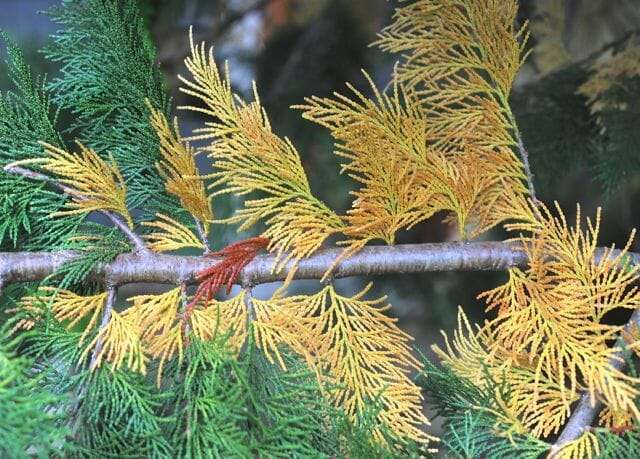 DON’T PANIC: Nothing’s wrong, and they’re not all dying in unison, I promise. Though we commonly call them “evergreens,” conifers such as pine, arborvitae, spruce and Hinoki cypress (above) lighten their load of old needles (the inner ones) in late summer and fall, with a show of yellowing or browning that can scare a gardener at first.
DON’T PANIC: Nothing’s wrong, and they’re not all dying in unison, I promise. Though we commonly call them “evergreens,” conifers such as pine, arborvitae, spruce and Hinoki cypress (above) lighten their load of old needles (the inner ones) in late summer and fall, with a show of yellowing or browning that can scare a gardener at first.
This phenomenon should not be confused with browning at the tips or overall yellowing or browning that can happen at other times—such as from winter desiccation; from the effects of roadside salts; from pests and diseases (including diplodia tip blight in some pines, or phomopsis tip blight in spruce and non-resistant junipers, or similar looking kabatina in junipers); or from drought. (See what road-salt damage and winterburn look like by comparison in these photos.)
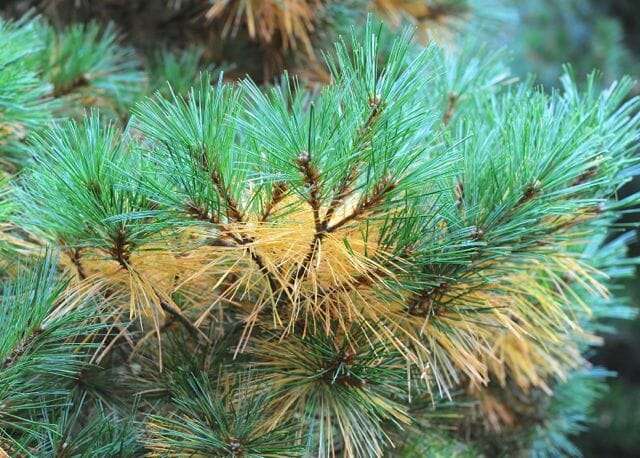
But in fact inner needle-drop is a normal part of the life cycle, though the rate varies by species, and can also accelerate if environmental stresses like dry conditions or pest infestation have affected the tree or shrubs in a given season.
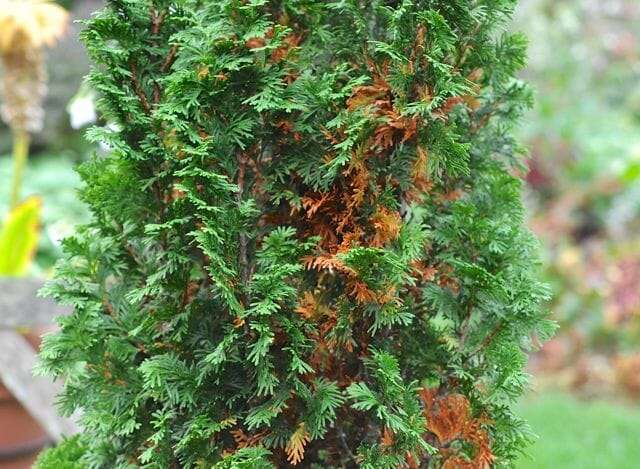
The losses should generally be from the inside out, not at the branch tips. Inner needles are the oldest, and as they age and get shaded by new growth farther out, they photosynthesize less effectively and are eventually shed. The plant lightens its load, and good thing, since snow and ice may be coming and extra needles could hold too much weight for the longer branches to bear.
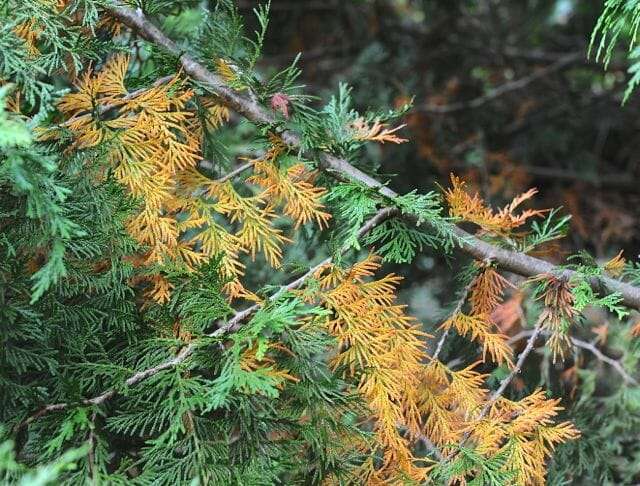
Speaking of evergreens: Some broadleaf ones such as Rhododendron will be pushing off old, useless foliage now, too. The only thing I’m worrying about there: the big old leathery foliage is falling into the frogpond and making the tenants angry. As the official janitor, my workload is temporarily increased, but if I don’t keep up I could have an amphibian riot on my hands.


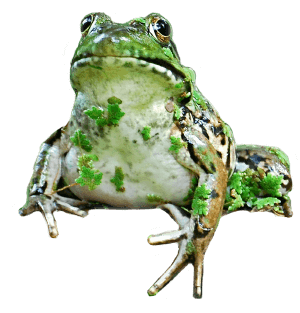
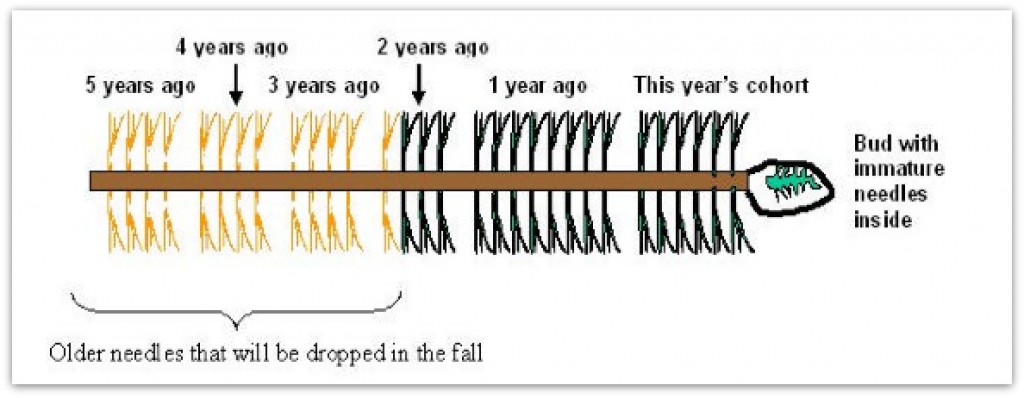


Great!
Fantastic!
Great content. I’m going to make those beans
It is mid May in the USA South and my trees (like the one shown above) are shedding yellow orange needles (a lot of them).
Would this seem normal this time of year?
What should be cut off or not cut off?
They are old trees – at least 25 years old. I top them to keep them away from power lines.
Thank you for this site and for any helpful comments.
Are the needles that are being shed all inner ones, not close to the tips of branches? I have some leftover inner needles shed (the process began last fall and not everything fell yet, though it turned brown and just hung on). You don’t say what species of conifer these are and if you like you could send a photo to awaytogarden at gmail dot come.
Hello Margaret! I have a arizona cypress down here in el paso texas and the lower inner needles are browning and falling, they are dry… is this normal? Its mid july. The rest of the tree looks ok, new branches and needles are growing . Should I do something to see if theres a problem of disease? This tree is like 4 years old. Please help! Thanks!
Hi, Jorge. I think it would be good to get local advice from your county extension agent office because if there is something up they are probably hearing from other people nearby, too. You local office can be contacted by chat, contact form, or phone and here is the contact info.
Hi there. I’m wondering if you’re familiar with Pom Pom Baby Blue Sawara Cypress. I included one in my front bed design and it was gorgeous initially but now the insides of the Pom Poms are turning yellow and brown. I’m thinking too much water, as after the bed was installed the fall rains started and not that much sun. Any thoughts? Thx.
And what would an amphibian riot look like?
Thanks for this information, is is really helpful.
My pine trees dropped their needles from the outer tips about four times in the spring. I thought it might be the Blight. I had all my trees fertilized. New needles at the tips have been growing over the summer. Fingers crossed.
Such a relief to know that the “rusty” appearance of those inner branches is normal. What with the price we pay for even young trees in Europe, it was so frustrating to see our new plants look as though they were dying within 3 months of planting in June. Now that I know we’ve done nothing wrong, I really hope we get the cold winter these conifers love & need, to flourish. Nor is Climate change a good development, along with 3-4 years of drought, pre-Covid, acid rain in the 80s & 90s & now far too lengthy & too hot summers.
Perfect info,was a little concerned as it’s was beautiful a week ago,being in South Africa,we are now in the middle of our very hot dry summer,so Thank you ,it all makes sense, happy gardener Gg
Loved reading this.
My juniper is brown and yellow on the inside, and the tips!! I KNOW this is from drought.
Any advice? I cut away some of the yellow, but probably not where I should have cut.
So many things — from damage resulting from stress as you mention might be at work there to various diseases (including these examples) — can affect junipers, so without some photos and a certain diagnosis, it is hard to say what exactly to do next …